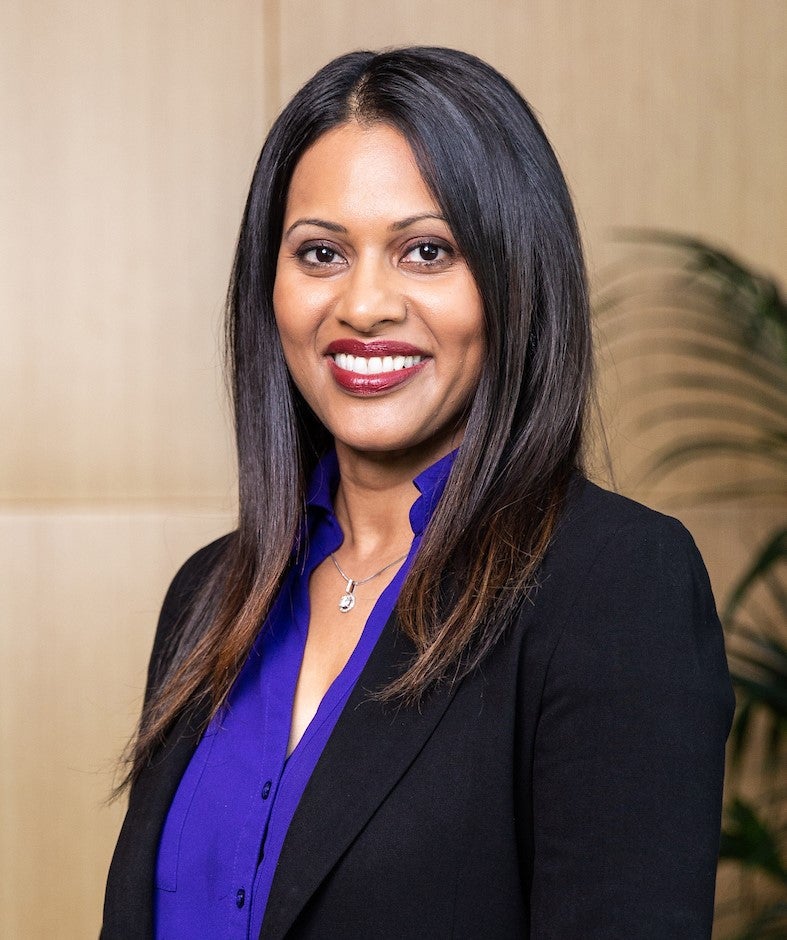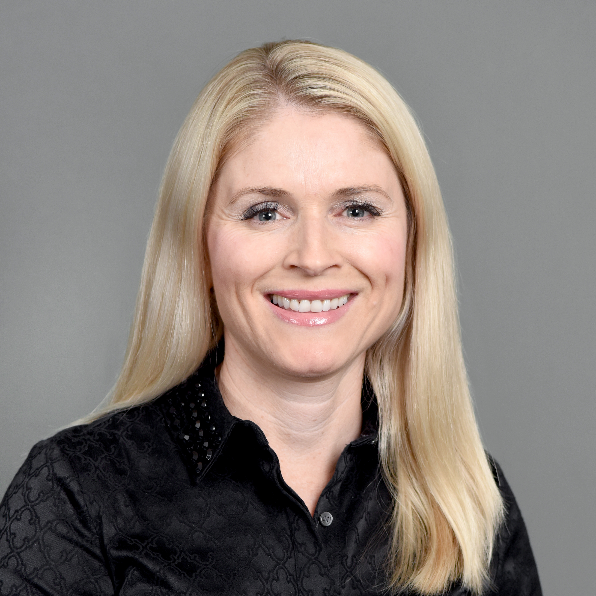It's not hard to put a face on health care inequity. The recent death of 26-year-old Sha-Asia Washington is but one of the many that account for the significantly higher rate of pregnancy-related mortality among women of color. And the racial disparities in health outcomes among COVID-19 patients in the U.S. have been widely reported.
“We’re witnessing what happens when you have an inequitable system,” said Swapna Reddy, a clinical assistant professor at Arizona State University. “We’re watching it happen in real time.”
In an article published in June in the Health Professions Education journal, Reddy, Clinical Associate Professor Kristen Will, adjunct faculty Alison Essary and former graduate student Mary Saxon, all of the College of Health Solutions, collaborated with researchers from the University of Washington School of Medicine and the University of Puget Sound to examine the effect that the diversity of the health care workforce has on the ability of people of color to access health care equitably.
Reddy, Will and Essary all have varying experience as providers in the health care field, and all share a passion for research that probes health disparities, a topic each of them has taught classes and/or advised on at ASU and Mayo Clinic. A few years ago, when happenstance brought them and the rest of their collaborators together at a conference, they knew they needed to combine forces.
Data analyzed for the resulting article, “Developing Workforce Diversity in the Health Professions: A Social Justice Perspective,” found that only 23% of African Americans, 26% of Hispanics and 39% of Asian Americans have a physician that shares the same race or ethnicity, while for white Americans, that number is 82%.
“There are many studies to show that when you have racial and ethnic concordance — which means the patients and the providers are either of the same or similar racial and ethnic backgrounds — there is a level of trust that's increased and there are better health outcomes,” Reddy said.
Swapna Reddy
The authors of the article, who come from a variety of disciplines and areas of expertise ranging from law to administration to K-12 and postsecondary education, also found that there are big problems with the educational pipeline into the health care field. That leaky pipeline manifests in the majority of people of color in health care professions remaining in entry-level and often lower-paying positions, the authors say.
“This is a social justice issue,” Reddy said. “And especially at this moment, when we’re thinking about systemic inequity, when we’re thinking about systemic racism, the health care system is one of our largest systems in the U.S., and what we see from this health care system is that all of these barriers — whether they are way upstream or directly at the point of care — so many barriers exist that are resulting in worse health outcomes for some of us. Some of our health does not look like the rest of our health. Some of our outcomes do not look like the rest of our outcomes. And we need to take a hard look at that.”
ASU Now sat down with Reddy, Will and Essary to do just that.
Editor’s note: Responses have been edited for length and clarity.
Question: How prepared is Arizona to meet the health care needs of its swiftly diversifying population, both in general and as it relates to the COVID-19 pandemic?
Reddy: The reality is that the United States is only becoming a more racially and ethnically diverse nation. We live in one of the states — Arizona — where that shift in demographic is happening faster than in most other places in the U.S. By 2030, in Arizona, we'll be living in a state that will be a minority-majority state. Specifically, the Hispanic population will no longer be a minority in this state. That’s a major shift in our demographics. And where we’re at from a health care system perspective, we don't necessarily have a system that has met its potential in terms of, not just cultural competency, but more importantly, cultural humility. Even with basic stuff like language access, we still have a ways to go. But we also need to understand how health is perceived differently in different cultures, and how those are really important factors that need to be considered as it relates to connecting with patients, connecting with communities and improving outcomes. So until we're at a place where we've improved our recruitment and retention of racial and ethnic minorities in the academic realm of these professions, it's important that those who are already practicing also become more culturally competent and gain more cultural humility to better serve these diverse populations.
What we've seen with the COVID-19 pandemic is just disturbing disparities in not only incidents but also outcomes as it relates to our African American population, our Native American population and our Hispanic population. Hopefully we’re at a precipice in this nation where we're ready to have tough conversations about why that is, and the next step is action.
Q: How did we get to where we are now, with such a lack of diversity in the health care workforce?
Essary: It's a historical remnant from the Flexner Report. The Flexner Report was conducted over 100 years ago to reevaluate medical education in the United States, and as a result of the Flexner Report, a number of medical schools were shut down, and the majority of those that were shut down were medical institutions that served racial and ethnic minority students, particularly students of color, as well as women. And we have yet to recover from that. And I think there are multiple structural inequities that we see in our current education system that reflect that. And when we talk about a leaky pipeline, a lot of the pipeline gaps that exist start in K-12 because of underfunded schools that largely serve students of color. I think it's rather condemning when you look at where the state of our education is right now. And it takes tremendous will to want to change that.
Kristen Will
Will: Over the last decade or two, among all health care professions — occupational therapy, physical therapy, physician assistant, pharmacy, etc. — we’ve seen a degree creep. You used to be able to enter these professions with a community college degree. Then they started to require a bachelor’s degree, then a master’s degree. And as you move up that degree creep ladder, it unfortunately edges out those who have difficulty getting that higher education. And as a result, we've seen an inverse relationship to representation of minorities.
Q: What is being done to correct that, and how can we ensure that going forward, there is more diversity in the health care workforce?
Will: There's a knowledge gap in the generations between students, who are now being taught about health disparity in their regular curriculum, and providers who are already out there in the workforce who really never had that in their training programs. I actually served on a communication and cultural humility task force at Mayo Clinic where we did a lot of teaching around this. So we’re really trying to make sure that we’re making provisions to educate everyone out there in the health care workforce about this, whatever stage in the pipeline they’re at.
Essary: ASU is doing a lot in this regard. One of the initiatives that we started several years ago in the College of Health Solutions is the Summer Health Institute. It’s a pipeline project to enhance workforce diversity in the health care professions. We encourage students from populations that are underrepresented in the health professions to apply and provide them with full funding to attend the program. The last data I saw from that program showed students who participated in it had a matriculation rate and college completion rate that was higher than the national average. Also at the College of Health Solutions is the science of health care delivery program, which was conceived around this integrated, interdisciplinary thinking about how social determinants of health interface with things like health economics, health policy and leadership. We want students to think about how all of these very important components interact in a successful system — or in our case, an unsuccessful system. We've been reluctant as a community, particularly in medicine, to talk about the inequities inherent in the system because it hasn't been perceived as our role, but it is our role. And then one of the most important partnerships that ASU has is with the local community colleges, which allow that next step in education and career pathways for students, from high school to community college to degree completion. Another thing that comes to mind, in my new role at HonorHealth, we're coming together with members of the ASU faculty community, including Swapna and Kristen, to put together a podcast series where experts engage in dialogue around these very topics. That should be launching at the beginning of 2021.
Alison Essary
Reddy: I teach health policy and health disparities and unconscious bias to first-year med students at the Mayo Clinic Alix School of Medicine through the Mayo Clinic and Arizona State University Alliance for Health Care, and since I’ve been at ASU, I've taught an undergraduate health disparities course at the College of Health Solutions. During that time, I’ve seen a real interest and commitment in not only having specific courses that teach this topic, but in embedding it in the overall curriculum so that every health-related course you take, you should have some thread of equity in there. It shouldn't be something that you have to take a separate course to think about. Even aside from the College of Health Solutions, there’s been a real focus on curriculum development in this space. There are initiatives all across the university in this regard, and I would be leaving so many out if I tried to name them all. There are opportunities to hear amazing speakers and look at research that's happening not just at our university, but across the country. There’s ASU’s connection with the larger community that I think is really important; these amazing connections with our clinical partners and community colleges in the Valley, especially those that serve lower-income communities. Because the big picture is that what we're talking about is these larger inequities that already exist within our society. We’re talking about racism. We're talking about socioeconomic disadvantages. We're talking about substandard school systems. And all of these barriers at the beginning of that pipeline that make it so hard to get to the other end of the pipeline. So I think the larger topic that needs to be addressed is systemic inequity, because it is literally impacting peoples' lives. And I think if we're not framing it that way, we’re frankly not going to move forward. Because it is just that serious, and it is just that big of an issue. Especially at the juncture we're at in our national dialogue. We need to get honest about these conversations or we're going to go nowhere.
Top photo courtesy iStock/Getty images
More Health and medicine

New study seeks to combat national kidney shortage, improve availability for organ transplants
Chronic kidney disease affects one in seven adults in the United States. For two in 1,000 Americans, this disease will advance to kidney failure.End-stage renal failure has two primary…

New initiative aims to make nursing degrees more accessible
Isabella Koklys is graduating in December, so she won’t be one of the students using the Edson College of Nursing and Health Innovation's mobile simulation unit that was launched Wednesday at Arizona…

Reducing waste in medical settings
Health care saves lives, but at what cost? Current health care practices might be creating a large carbon footprint, according to ASU Online student Dr. Michele Domico, who says a healthier…





